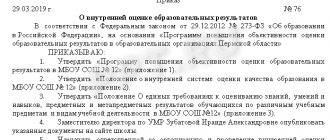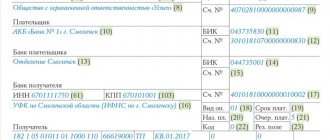The concept of personnel records management
Personnel records management is a branch of activity that documents labor relations. Personnel documentation records information about the presence and movement of personnel, as a result, all personnel procedures are documented (for example, recruitment, transfer, promotion, disciplinary action, business trip, vacation, dismissal, etc.).
Any personnel document records legally significant facts, which are the basis for a set of rights and obligations of the employee and the employer that correspond to each other.
Most personnel documents contain information of high social significance. Therefore, the attitude towards working with such documents should be extremely serious. Since confirmation of certain legal facts on the basis of which certain employee rights arise depends on the correct completion of personnel documents.
Why another experiment is needed?
The Ministry of Labor decided not to wait for the next changes in legislation regarding electronic digital signatures to appear. In addition, officials are confident that practical experience of switching to electronic documents is much more useful for drafters of the bill than any other options for collecting information. Therefore, over the next three years, it is planned to conduct another experiment on the transition to ECD. The corresponding bill has already been prepared and should soon be submitted to the State Duma.
The goal of the second pilot project is to identify and, if possible, find a solution to problems associated with the use of electronic signatures, archival storage of e-documents, and other issues when working with electronic digital signatures. Moreover, a business that agrees to participate in the experiment will have to work at a time when other regulations are also changing. According to the Ministry of Labor, amendments to the following Federal laws must be approved by 2021:
- “On archiving in the Russian Federation”;
- “On the mandatory copy of documents”;
- “On information, information technologies and information protection”;
- other regulatory legal acts that contain references to electronic documents, procedures for storing and using an electronic duplicate (electronic image) of a document or the document itself.
As for the project participants, they are still unknown, but it is planned that there will be about 10 organizations ready for changes in their work. All expenses that employers will have to bear are entirely their responsibility. At the same time, they will be able to choose which types of electronic signatures to use and which personnel documents to maintain exclusively in electronic form. The only rule is to be sure to use an enhanced qualified electronic signature if:
- employment contract;
- agreement on liability;
- student agreement.
Or if changes are made to them.
It is also clarified that as part of the experiment, companies will have to develop and ensure the functionality of their own information system, which will allow storing electronic documents and providing access to them to different categories of users for various actions (making changes, monitoring, receiving an extract (copy), etc.).
Officials have not forgotten about the rights of workers. Companies that will participate in the pilot project will be required to stipulate in collective agreements or individual agreements with employees that they are not against transferring documents to an online format.
According to the plans of the Ministry of Labor, the experiment should take place from 01/01/2019 to 12/31/2022. But if State Duma deputies do not have time to approve the bill, the deadlines may change. Follow our news.
Tasks of personnel document flow
HR records management allows you to effectively solve several problems at once:
— document labor relations, formalize personnel procedures at a specific employer;
— build a coherent personnel management system that meets the strategic objectives of management;
— regulate the relationship between employee and employer;
— create an organizational and legal basis for labor activity for both employees and the employer;
— resolve labor disputes.
Personnel policy and personnel document flow of the organization
The existence of any organization is impossible without document management. Already at the planning stage of any organization, a person is faced with the preparation and execution of primary documents, such as a business plan, state registration certificates, documents prepared by the tax authorities, etc.
Further, along with maintaining current documentation of a company or organization, in accordance with current legislation, personnel document flow is also maintained, ensuring the organization of work on personnel management. To effectively organize this work, a clear understanding of the personnel policy pursued in the organization is necessary.
Personnel policy is the general direction of personnel work, a set of principles, methods, forms, organizational mechanisms for developing goals and objectives aimed at preserving, strengthening and developing personnel potential, creating a qualified and highly productive team capable of promptly responding to constantly changing market requirements, taking into account strategic development of the organization and strategy for managing its personnel.
Based on the definition, we can conclude that the main goal of personnel policy is to create a personnel management system based primarily not on administrative methods, but on economic incentives and social guarantees aimed at bringing together the interests of the employee and the organization, achieving high labor productivity, increasing production efficiency.
The main task of personnel policy is to ensure conditions for the implementation of current legislation in the field of labor relations.
What can be translated into online format now?
Russian legislation contains many regulations that allow companies to transfer some personnel documents into digital format. By decision of the enterprise management, internal papers can be drawn up directly on work computers. If necessary, they can be printed and signed. If they are sent digitally to employees or government agencies, their authenticity must be confirmed with an electronic digital signature.
Here is a list of documents that can be compiled on a computer:
- employment contract with a remote worker (Article 312.2 of the Labor Code of the Russian Federation);
- electronic sick leave (Federal Law dated May 1, 2017 No. 86-FZ);
- acts of work performed under civil contracts (clause 4 of article 11 of the Federal Law of July 27, 2006 No. 149-FZ “On information, information technologies and information protection”);
- information about personalized accounting and paid insurance premiums (Article 11 of the Federal Law of April 1, 1996 No. 27-FZ “On individual (personalized) accounting in the compulsory pension insurance system");
- any other documents in which employees do not need to sign (for example, an electrical equipment logbook, a working time log, etc.).
Personal cards of employees, orders for personnel, work books and their records, employment contracts and additional agreements to them, as well as most personnel journals must still be kept on paper.
Types of personnel policies
Types of personnel policies:
a) according to the level of awareness of the rules and regulations that underlie personnel activities:
1) Passive, when the management of the enterprise does not have a clear idea of actions regarding personnel management and all personnel work comes down to eliminating negative consequences. This policy is characterized by the lack of a forecast of personnel needs, tools for assessing labor and personnel, and as a result, management in this case is often forced to act in an emergency response to any conflict situations, without analyzing the causes and possible consequences of these situations.
2) Reactive. In this case, management exercises control over the symptoms of a negative state in personnel work, the causes and situation of the development of the crisis and takes timely measures to localize the crisis, aimed at understanding the reasons that led to the crisis in personnel work.
3) Preventive, i.e. This policy is aimed at preventing the occurrence of any difficulties in working with personnel and is used when the management of the enterprise has justified forecasts of the development of the situation. Enterprise development programs contain short- and medium-term forecasts of personnel requirements and formulate tasks for personnel development.
4) Active. We can talk about the existence of this personnel policy when the management of the enterprise has not only a forecast of the development of the situation, but also the means of influencing this situation, and the personnel service is able to develop anti-crisis personnel programs, conduct regular monitoring of the situation and adjust the implementation of the program.
b) according to the degree of openness of the organization to the external environment when forming personnel:
1) An open personnel policy is characterized by the fact that the organization is transparent to potential employees at any structural level. This policy can be used by new organizations that are pursuing an aggressive policy of conquering the market, focused on rapid growth and reaching the forefront in their industry.
2) A closed personnel policy is characterized by the fact that the organization is focused on including new employees only from the lowest official level, and vacant positions at the highest level are filled by employees who have been working in the organization for some time. This policy is typical for companies focused on creating a certain corporate atmosphere, as well as operating in conditions of shortage of human resources.
Read also: Personnel strategy and personnel policy of enterprises
The main element of personnel policy is personnel records management - a branch of activity that regulates labor relations. Personnel documentation records information about the presence and movement of personnel and is an integral responsibility of any employer, regardless of the scale of its activities and legal form. Conducting personnel records allows the employer not only to document labor relations and formalize human resources, but also to solve many other problems, thereby protecting himself from negative consequences when resolving labor disputes in court, where personnel documentation is intended to act as written evidence. Thus, personnel records management is a tool that allows you to clearly regulate the relationship between employer and employee, the rights and obligations of the parties to labor relations, document uniform principles of corporate relations, and build a well-functioning, stable personnel management system.
[flat_ab id=”5"]
Providing documents to an employee
When an employee contacts the personnel service with a request for copies of work-related documents (for example, copies of an order for employment, orders for transfers to another job, an order for dismissal from work, extracts from the work book, salary certificates), the procedure action is as follows:
- the executor (HR employee), having received a corresponding application from the employee, prepares a package of documents;
- the accuracy of copies of documents is certified by the signature of the manager or an authorized official and the seal;
- copies of documents are provided to the employee.
Copies of documents must be prepared and provided to the employee no later than three working days from the date of submission of the application. They are provided to the employee free of charge.
Such rules are established by Article 62 of the Labor Code of the Russian Federation.
At the same time, the list of documents that must be provided to the employee is open. That is, the organization is obliged to provide the person with copies of any documents related to his work. Similar clarifications are contained in the letter of Rostrud dated December 20, 2012 No. PG/9518-6-1.








